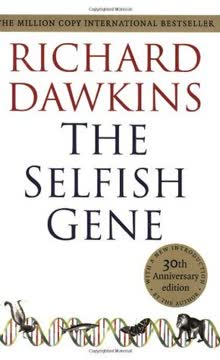Key Takeaways
1. Species Evolve Through Natural Selection
Natural selection acts solely by the preservation of profitable modifications, each new form will tend in a fully-stocked country to take the place of, and finally to exterminate, its own less improved parent or other less-favoured forms with which it comes into competition.
Fundamental Mechanism of Evolution. Natural selection represents a powerful process where organisms with advantageous traits are more likely to survive and reproduce. This mechanism ensures that beneficial characteristics become more prevalent in subsequent generations, gradually transforming species over time.
Key Principles of Natural Selection:
- Organisms produce more offspring than can survive
- Individuals have unique variations
- Beneficial traits increase chances of survival and reproduction
- Consistent selection leads to gradual species transformation
Continuous Adaptation Process. Natural selection operates as a continuous filtering mechanism, allowing organisms with traits most suited to their environment to thrive while less adapted individuals are gradually eliminated. This process ensures species remain dynamically responsive to changing environmental conditions.
2. Individual Variations Drive Evolutionary Change
Every variation which is not inherited is unimportant for us. But the number and diversity of inheritable deviations of structure, both those of slight and those of considerable physiological importance, is endless.
Genetic Diversity as Evolution's Raw Material. Individual variations within a population provide the essential genetic variability that enables evolutionary adaptation. These differences, though often seemingly minor, can accumulate and become significant over multiple generations.
Sources of Variation:
- Genetic mutations
- Sexual reproduction
- Environmental interactions
- Inherited trait combinations
Importance of Variability. Genetic diversity ensures that populations can respond to environmental challenges by maintaining a range of potentially adaptive traits. Without such variations, species would lack the flexibility to survive changing conditions.
3. Competition and Survival Shape Species Development
The struggle for existence inevitably follows from the high rate at which all organic beings tend to increase.
Survival of the Fittest. Competition between individuals and species drives evolutionary change by determining which traits provide survival advantages. Organisms must compete for limited resources, leading to the progressive refinement of adaptive characteristics.
Competitive Dynamics:
- Limited environmental resources
- Interspecies competition
- Predator-prey relationships
- Reproductive success
- Environmental challenges
Complex Interactions. Survival involves intricate relationships between organisms, their environment, and other species. Success depends not just on individual strength, but on complex adaptive strategies and interconnected ecological networks.
4. Geographical Isolation Influences Species Formation
Isolation, also, is an important element in the process of natural selection. In a confined or isolated area, if not very large, the organic and inorganic conditions of life will generally be in a great degree uniform.
Geographical Barriers and Speciation. Physical separation can create unique evolutionary pathways by preventing genetic mixing between populations. Isolated environments allow distinct adaptations to emerge without external genetic interference.
Isolation Mechanisms:
- Mountain ranges
- Ocean barriers
- Climate differences
- Geological transformations
- Ecological niches
Divergent Evolution. When populations become separated, they develop unique genetic characteristics responsive to local environmental conditions, potentially leading to the formation of entirely new species.
5. Geological Record Provides Incomplete Evidence of Evolution
The geological record is extremely imperfect and this fact will to a large extent explain why we do not find numerous transitional varieties connecting extinct and existing species by an insensibly graduated succession of extinct and intermediate link.
Limitations of Fossil Evidence. The geological record offers an fragmentary glimpse of evolutionary history, with significant gaps and incomplete preservation of transitional forms. This incompleteness makes tracing precise evolutionary pathways challenging.
Challenges in Fossil Preservation:
- Rare conditions for fossilization
- Geological transformations
- Limited geographical sampling
- Time scale complexity
Interpretative Complexity. Scientists must carefully interpret limited fossil evidence, recognizing that the available record represents only a tiny fraction of life's actual evolutionary history.
6. Reproductive Barriers Define Species Boundaries
The fertility of varieties, when intercrossed, and likewise the fertility of their mongrel offspring, is, on my theory, of equal importance with the sterility of species.
Reproductive Isolation Mechanisms. Species are fundamentally defined by their ability or inability to produce fertile offspring. Reproductive barriers prevent genetic mixing between distinct evolutionary lineages.
Types of Reproductive Barriers:
- Genetic incompatibility
- Behavioral differences
- Geographical separation
- Physiological constraints
- Temporal reproductive cycles
Evolutionary Significance. Reproductive isolation enables distinct genetic lineages to develop independently, facilitating specialized adaptations and preventing homogenization.
7. Complex Adaptations Emerge Gradually
To suppose that the eye with all its inimitable contrivances for adjusting the focus to different distances, could have been formed by natural selection, seems, I freely confess, absurd in the highest possible degree.
Incremental Complexity. Sophisticated biological structures develop through cumulative minor modifications, with each slight improvement providing marginal survival advantages. Complex organs evolve through continuous, minute refinements.
Adaptation Progression:
- Initial rudimentary structures
- Gradual functional improvements
- Cumulative genetic modifications
- Environmental pressures
- Reproductive advantages
Nuanced Development. Complex adaptations emerge not through sudden transformations, but through patient, persistent refinement across numerous generations.
8. Extinction is a Natural Part of Species Progression
Natural selection acts solely by the preservation of profitable modifications, each new form will tend in a fully-stocked country to take the place of, and finally to exterminate, its own less improved parent or other less-favoured forms.
Evolutionary Replacement Dynamics. Extinction represents a natural mechanism of evolutionary change, where less-adapted species are gradually replaced by more successful evolutionary strategies.
Extinction Factors:
- Environmental changes
- Competitive disadvantages
- Resource limitations
- Genetic inflexibility
- Catastrophic events
Continuous Transformation. Species extinction ensures evolutionary dynamism, creating opportunities for new life forms to emerge and adapt.
9. Inherited Traits Accumulate Over Generations
Slight variations, if useful, are preserved and accumulate through natural selection.
Generational Trait Transmission. Beneficial characteristics are progressively retained and amplified through consistent inheritance, enabling gradual species transformation.
Inheritance Mechanisms:
- Genetic transmission
- Epigenetic modifications
- Sexual recombination
- Environmental interactions
Cumulative Adaptation. Small, advantageous variations accumulate over multiple generations, creating substantial evolutionary changes.
10. Environmental Changes Drive Evolutionary Adaptation
Every organic being is constantly endeavouring to increase in numbers; and, consequently, if any one being vary ever so little, either in habits or structure, and thus gain an advantage over some other inhabitant of the country, it will seize on the place of that inhabitant.
Dynamic Environmental Responsiveness. Species continuously adapt to changing environmental conditions, with survival depending on genetic flexibility and responsive modification.
Adaptation Strategies:
- Behavioral modifications
- Physiological changes
- Migration
- Specialization
- Genetic diversification
Survival Through Change. Successful species maintain evolutionary potential by remaining responsive to environmental challenges.
Last updated:
FAQ
What's The Origin of Species about?
- Theory of Evolution: Charles Darwin presents his groundbreaking theory of evolution through natural selection, explaining how species adapt and change over time.
- Natural Selection Mechanism: The book describes natural selection as the process where advantageous traits become more common in a population, leading to evolution.
- Common Ancestry: Darwin argues that all species share a common ancestor, evolving into distinct forms through gradual modifications.
Why should I read The Origin of Species by Charles Darwin?
- Foundational Scientific Text: It is one of the most important works in biology, laying the groundwork for modern evolutionary theory.
- Influential Ideas: Darwin's concepts have profoundly impacted fields like genetics, ecology, and conservation, making it essential for understanding biological sciences.
- Historical Significance: The book provides insight into 19th-century scientific debates and the development of ideas that challenged traditional views of creation.
What are the key takeaways of The Origin of Species?
- Natural Selection is Key: The principle of natural selection explains how species evolve and adapt to their environments over time.
- Variation and Adaptation: Darwin emphasizes the importance of variation within species, which is crucial for adaptation to changing environments.
- Common Ancestry: The book posits that all species share a common ancestor, leading to the diversity of life we see today.
What are the best quotes from The Origin of Species and what do they mean?
- "Natura non facit saltum": This phrase means "Nature does not make leaps," emphasizing that evolution occurs gradually through small changes.
- "Survival of the fittest": This encapsulates the idea that those best suited to their environment are more likely to survive and reproduce.
- "There is grandeur in this view of life": Reflects Darwin's appreciation for the complexity and interconnectedness of life, suggesting a profound beauty in evolution.
What is natural selection according to The Origin of Species?
- Preservation of Favorable Traits: Natural selection is the process by which individuals with advantageous traits are more likely to survive and reproduce.
- Struggle for Existence: Organisms compete for limited resources, leading to the survival of the fittest.
- Gradual Change Over Time: This process results in gradual changes in species, leading to the development of new varieties and ultimately new species.
How does Darwin explain variation in species in The Origin of Species?
- Causes of Variability: Darwin discusses factors like environmental influences and domestication that contribute to variation.
- Importance of Individual Differences: Individual differences within a species are crucial for natural selection to act upon.
- Role of Heredity: Beneficial variations tend to be inherited by offspring, leading to the gradual evolution of species.
How does The Origin of Species address extinction?
- Inevitable Consequence of Evolution: As new species arise through natural selection, others become rare and eventually extinct.
- Competition Among Species: Closely related species often compete for the same resources, leading to the extinction of less adapted forms.
- Geological Evidence: The fossil record supports the idea that many species have gone extinct over time, highlighting the dynamic nature of life on Earth.
What role does the environment play in The Origin of Species?
- Influence on Variation: The environment affects the traits that are advantageous for survival, shaping the direction of natural selection.
- Adaptation to Conditions: Species must adapt to their specific environments to thrive, leading to diverse forms and behaviors.
- Geographical Distribution: Different environments lead to the development of distinct species in various regions.
How does Darwin use domesticated animals and plants in his arguments in The Origin of Species?
- Examples of Variation: Darwin examines how selective breeding in domesticated species illustrates the principles of natural selection and variation.
- Human Influence on Evolution: He highlights how humans have shaped the traits of domesticated animals and plants, providing a model for understanding natural processes.
- Connection to Wild Species: Changes seen in domesticated species help explain the variations and adaptations observed in wild populations.
What is the significance of geographical distribution in The Origin of Species?
- Patterns of Distribution: Darwin discusses how the geographical distribution of species supports the theory of evolution, as closely related species are often found in similar environments.
- Barriers to Migration: Physical barriers influence the distribution and evolution of species, leading to unique adaptations in isolated populations.
- Evidence of Common Ancestry: Similarities and differences in species across different areas provide evidence for shared ancestry and descent with modification.
How does Darwin explain the similarities between embryos of different species in The Origin of Species?
- Embryonic Development: Darwin notes that embryos of different species within the same class often exhibit striking similarities, suggesting a common ancestry.
- Evolutionary Significance: These similarities indicate that basic structures are inherited from a common ancestor, even if they diverge in adulthood.
- Support for Descent: The resemblance of embryos reinforces the idea of descent with modification, showing shared developmental pathways.
What are the implications of The Origin of Species for modern biology?
- Foundation of Evolutionary Biology: The book laid the groundwork for understanding the diversity of life and the processes that drive evolution.
- Integration with Genetics: Darwin's ideas have been integrated with modern genetics, leading to the modern synthesis of evolutionary theory.
- Impact on Various Fields: Concepts from the book have influenced disciplines like ecology, conservation biology, and anthropology, shaping our understanding of life on Earth.
Review Summary
On the Origin of Species is widely praised as a groundbreaking scientific work that revolutionized biology. Readers appreciate Darwin's clear writing, meticulous research, and humble approach. Many find the book surprisingly readable and engaging, despite its age and dense subject matter. Some note it can be repetitive or challenging in parts. While most reviewers accept evolution as fact, a few remain skeptical. Overall, the book is highly regarded for its monumental impact on science and human understanding of the natural world.
Similar Books










Download PDF
Download EPUB
.epub digital book format is ideal for reading ebooks on phones, tablets, and e-readers.





